Written in 1972
When I first watched Sussex play at the County Ground, Hove, in 1925, the scene was very different from that which meets the eye today [1972]. The Members’ stand was about a third of the present building and the wooden structure, known affectionately as the ‘hen-run’ or ‘chicken coop’, which now stands on the eastern side of the ground, was all that constituted the Ladies’ Pavilion. Hard seats were the order of the day: the deck chairs area a comparatively recent innovation. The ‘cowshed’ at the southern end had a high white wooden front against which the ball hurtled with a satisfying thump to register yet another boundary on those long, warm, summer days.
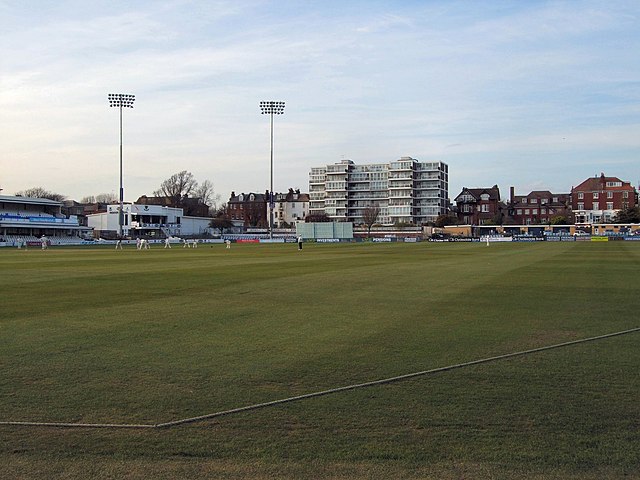
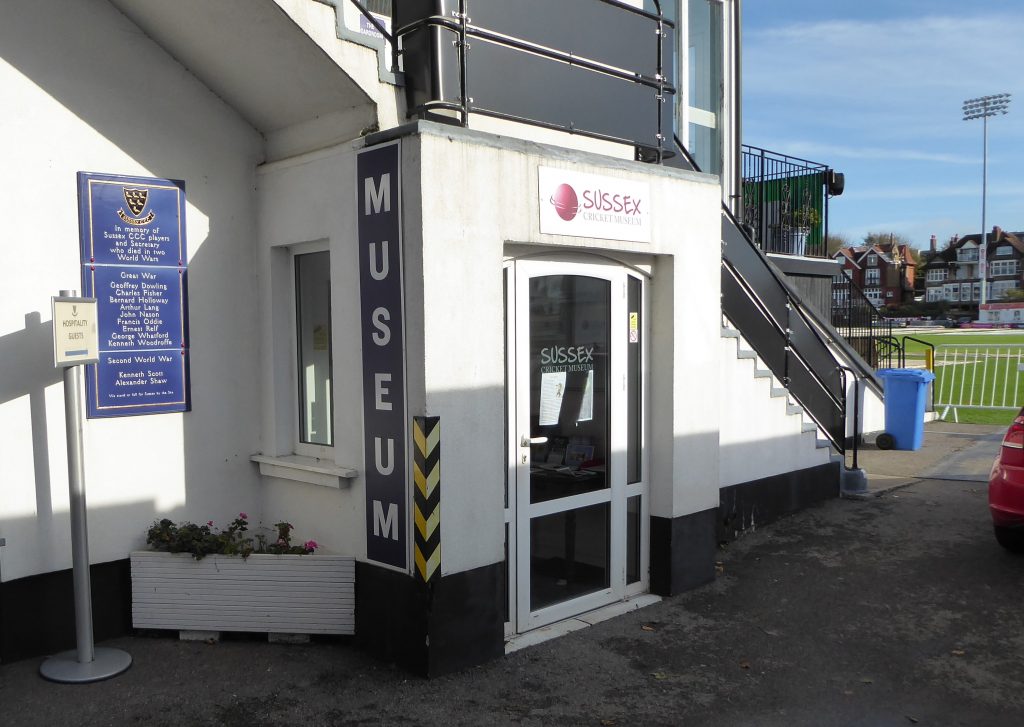
The sports club
Near the gate was the building known as the Sports Club – later it became a factory – which is now the site for the new block of flats to be erected behind the new Arthur Gilligan stand. In this old Sports Club, the players had their April net practice. After the war the old tennis courts at the north became the practice area, and the late James Langridge, George Cox, jnr, and later Jim Parks, snr have all acted as coach.
A horse pulled the rollers
In those early days the Head Groundsman was Tom Burchell, who, with his assistants, Beach and Prior, put in long hours of devoted labour on the hallowed turf. Then Miss Shaw began to beautify the flower beds with glorious roses and other flowers and more recently Len Creese, whilst he was Head Groundsman, continued this good work with his potted plants. I remember a horse which was attached to the ground staff; he wore huge leather bootees and pulled the roller between the innings. A few years ago, these bootees were still to be seen hanging on the wall of the groundsman’s hut.
Amateurs and professionals had separate dressing rooms
In 1925, and for some time after, the amateurs and professionals were rigorously separated, the former coming out from the centre of the pavilion below the clock, the latter from what is now the Secretary’s office, which was all they had as dressing rooms. Score-boards, too, were primitive, and it was not until about 1930 that the one in memory of Sir Hildebrand Aubrey Harmsworth was erected facing the pavilion. In the late 1950s this had an extension which indicated the runs per over and other details; it was the first in the country to give this information. The score-board near the Secretary’s Office was rebuilt in 1934 in memory of ‘Ranji’, and in 1955 the Welfare Offices were opened, linking these two buildings.
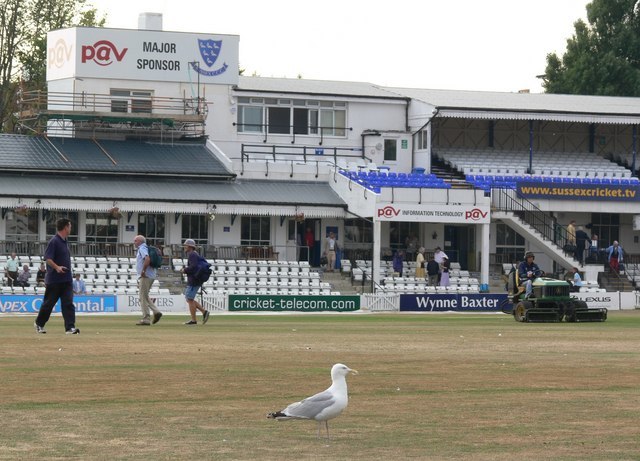
The ground was bombed
And what of the players? Who can fail to warm at the thought of them? Sussex has always been rich in cricketing families – the Gilligans, Relfs, Langridges, Parks, Oakes and now the Busses. To these must be added the never-to-be forgotten names of father and son relationships – Fred and Maurice Tate, George Cox, snr and young George, ‘old’ and ‘young’ Jim Parks and to bring us up to date ‘Billy’ Griffith, Secretary of the MCC and his son Mike, who is the present county captain. Then there were ‘Tich’ and Jim Cornford, who, to the confusion of strangers, were not related.
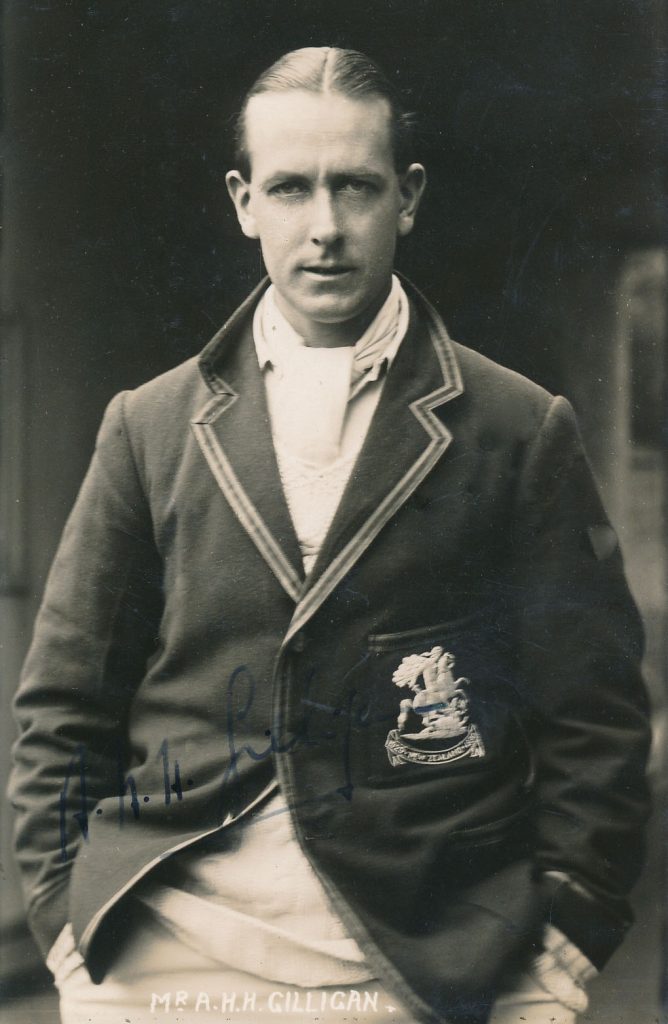
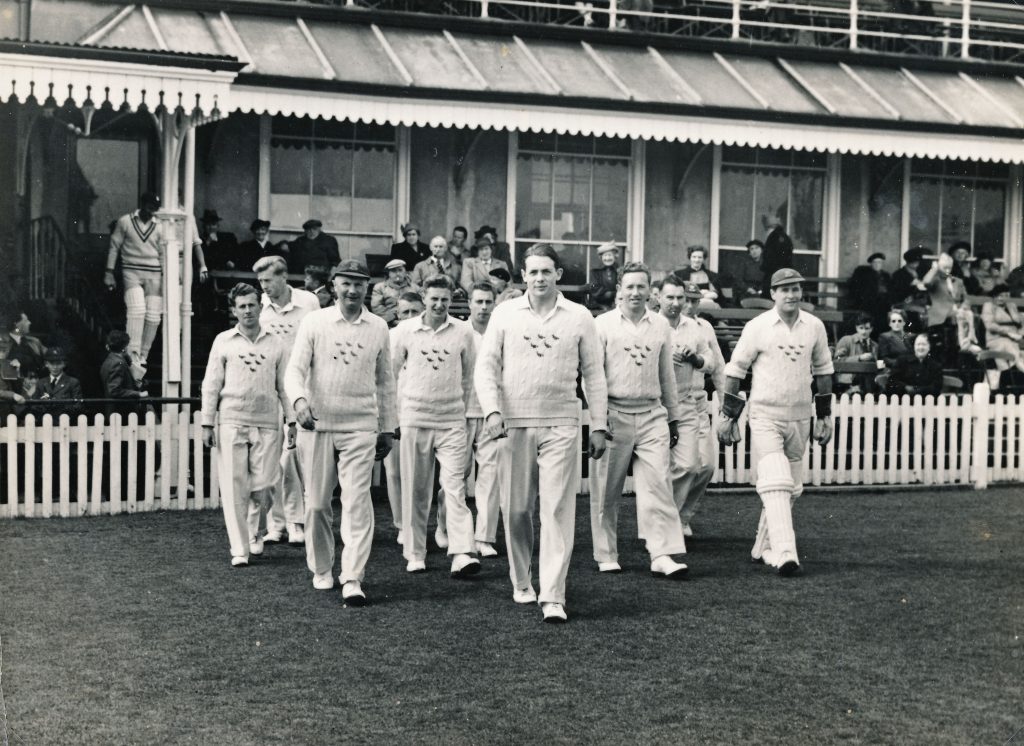
Talented amateurs
Other names that spring to mind are those of Ted Bowley, Tommy Cook and Wensley, and of course that master of the late cut, Duleepsinhji. In August, too, came talented amateurs such as the hard hitting Col. Watson, J.K. Matthews, G.S. Grimston, later the Secretary of the Club, and the fantastic Rev. F.B.R. Browne, whose amazing bowling action earned him the name of ‘Tishy’. In post-war years H.T.Bartlett and David Sheppard followed by Ted Dexter have kept the flame alive, and we could do with more who would play their cricket in this vein.
Former characters
Old cricketers will remember A.J. Gaston (‘Leather Hunter’) who wrote so much on Sussex cricket, and Tim Killick, who for so long acted as scorer. Another ‘character’ of the past was the old man known to us all as ‘Cushions’, who did a good trade with his ‘three halfpenny of comfort’ in the days when wooden benches were very hard.
For many years now energetic committees have worked strenuously to keep cricket abreast of the times and a fine library has been established which is open throughout the year. Thus the scene is set -now let the players do their part well – and above all, let us have fine weather.
Of those who have helped off-stage, I recall Sir Archibald Ashburnham-Clement, J.P. Bart, who was President in 1925, followed in due course by A.M. Muller-Hallett, Sir Home Gordon, and the tireless Duke of Norfolk, who had held office since 1949.
A cloud over the game
But these happy times were not to last. The cloud that hung over Eastbourne Cricket Week in 1939, and which sent the West Indies hurrying for home a few weeks later, did not lift for nearly seven years. During this time Service cricket was played at Hove and many well-known players helped to keep the game alive. One Saturday afternoon there was a tip-and-run raid on Brighton, a cinema in Kempton was hit, and a bomb fell in the south-east corner of the County Ground. The Secretary called out, ‘’Lie down!’’ as the plane zoomed towards us, and then more urgently, ‘’Keep away from the glass!’’. Luckily for us the bomb did not explode, and the ground was quickly cleared. Arthur Gilligan, who was playing in the match records that Maurice Tate, his hand in his mouth in that characteristic gesture of his, said. ‘’Fancy them doing that to US!’’ I have often thought how infuriated Jerry must have been to see ‘’these flannelled fools’’ happily pursuing their game of cricket in the middle of a world war!
Memories of the County Cricket Ground
by L.M.F. Stapleton, from Sussex County Cricket Club, Hove 1872-1972